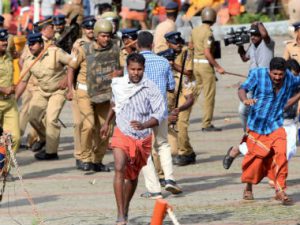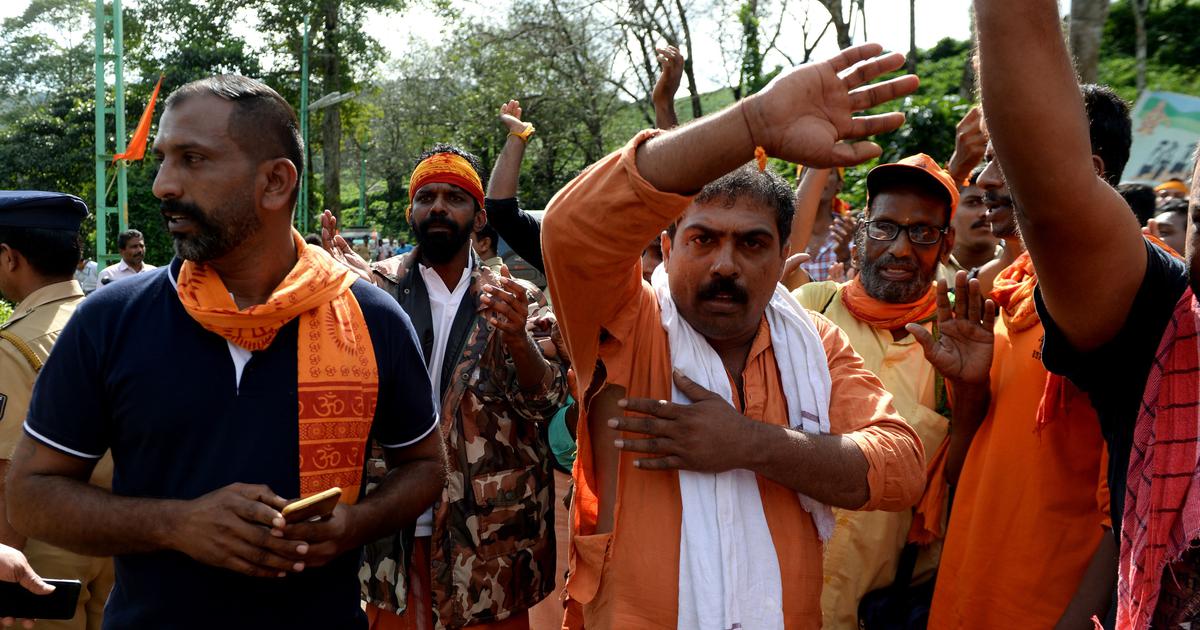Posted by Saranya S
“We cannot accept the logic of those who argue that children irrespective of their caste background have to get entry in schools without any discrimination, as a part of ensuring equal rights and participation of people in every customs and social practices. Those who have been cultivating knowledge and the class of people who have been cultivating in lands can never be considered equals, that would be like equating a buffalo to a horse.”
This is a statement made by ‘the revolutionary’ Swadesabhimani Ramakrishna Pillai on March 2nd, 1910, against the historical movement led by Ayyankali ensuring the right to education for the children from lower castes. The statement, without much contestations, can surely be considered as a very regressive and casteist in the present times. But the same statement reflects the then majoritarian take on the issue, as the children of the so-called ‘untouchables’ mingling along with the upper caste children was against the prevalent religious and social customs of the time. An aggressive and violent opposition was unleashed in the society regarding the same during the time.
When the 2018 Sabarimala judgement, by a five-judge constitution bench headed by then Chief Justice Dipak Misra, to allow women entry in the temple, is facing turbulent opposition from the majoritarian Hindu community now, as it is considered as a violation of the age old customs, it becomes important to look back to the history of how the Kerala society had reacted to the movements questioning the discriminatory practices and customs in the past.
The Kerala society is facing a difficult time because of the unnecessary chaos created by the right wing fringe elements against the recent Sabarimala verdict. Ten journalists were attacked near the temple on Wednesday. A Hindu group named Sabarimala Samrakshana Samiti supported by BJP called for a ‘hartal’ on the 18th (Thursday) which turned violent in many places. KSRTC buses, hotels, shops were attacked by supporters of the protest across the state.
A Hindu group named Sabarimala Samrakshana Samiti supported by BJP called for a Hartal on the 18th which turned violent in many places.
As the violence unleashed in Nilakkal base camp continued despite the prohibitory order Rahul Eswar, activist and leader of Ayyappa Dharma Sena and one of the major perpetrators of violence, sent to a 14 day judicial custody along with twenty other members. Even though the temple opened, amidst the violent protests women entry was obstructed by the protestors. New York Times journalist Suhasini Raj who came to report the events and was trekking towards the shrine had been stopped with violent acts and abusive words by Ayyappa Dharma Sena and Viswa Hindu Parishadh at Appachimed, near Marakkoottam.
Also read: The Sabarimala Controversy: Women And Their Right To Pray
Channar revolt, seeking the right for women to wear upper body clothes to cover the breasts, from 1813 to 1859 was strongly opposed and the women who protested were attacked even by the fellow women who believed in the custom. They propagated violence stating that the violation of the custom will lead to the annihilation of caste differences which may result in social pollution. Stone-necklace protest (1915) by Pulaya community, was a social revolution against upper caste dictums restricting the lower caste to use public roads, denying the right to education and entry into temple, prohibiting women to wear gold or metal ornaments.
This movement too had faced threats and assaults from the ‘protectors’ of age old religious customs. 1917 ‘panthibhojanam’ (interdining) allowed people from different castes to dine together questioning the caste discriminations and practices like untouchability. The participants of the same had to face many oppositions starting from social boycotting of their families to death threats. When ‘Sati’ one of the most regressive and gender discriminatory Hindu ritual was banned, rallies and protest gatherings were conducted opposing the move.

Image Source: First Post
The nature of violence unleashed against the present Supreme Court verdict in Kerala threatening the women entry in Sabarimala has striking similarities with the history of opposition faced by the above mentioned movements questioning different discriminatory practices. The perpetrators of violence in the name of Sabarimala verdict across the state argue that no one can question the rituals which have been followed for decades. But the above mentioned customs and rituals have been considered as essential practices once by the society and the breaking of which was counted as anti-religious and anti-majoritarian in nature.
But history has proved that the views of the majority was wrong and we as a society could end such anti-human practices. When it comes to Sabarimala judgement, the relevance of women (of menstruating age) entry into the temple, what constitutes gender discrimination in terms of religious rituals has to be clarified.
But history has proved that the views of the majority was wrong and we as a society could end such anti-human practices.
The judgement gives new hopeto the the fight against gender discrimination in Indian context. Menstruation which is a natural biological phenomenon and a necessity for the survival of human race is considered as a taboo and an impure condition of women by most of the social and religious groups. Menstruating women are considered as ‘untouchables’ in various religious ceremonies starting from marriage to death ceremonies, and are denied entry in places of worships like temple. These practices are clear violations of our constitutional rights which questions untouchability, but are never considered the same since the social conditionings are so strong that even women themselves don’t find it a discriminatory practice.
The judgement states, “The social exclusion of women on menstruation is untouchability and is anathema to the constitution.”
It further states, “Rules based on biological characteristics will not muster constitution.”, “It is a universal truth that faith and religion do not countenance discrimination but religious practices are sometimes seen as perpetuating patriarchy thereby negating the basic tenets of faith and of gender equality and rights. The societal attitudes too centre and revolve around the patriarchal mindset thereby derogating the status of women in the social and religious milieu. All religions are simply different paths to reach the Universal One. Religion is basically a way of life to realise one’s identity with the Divinity. However, certain dogmas and exclusionary practices and rituals have resulted in incongruities between the true essence of religion or faith and its practice that has come to be permeated with patriarchal prejudices.”
This part of the judgement is highly relevant as it questions the cornerstone of patriarchal notions in our society. It is not just the Hindu religious customs but the rituals followed by most religions in India that give women a secondary status discriminating them from taking part in different religious practices stating biological reasons.
Also read: The Sabarimala Verdict Was In Favour Of Women, But Will That Be Enough?
The judgement gives scope to question any of such practices. It gives scope even to question the discriminatory attitude of religions towards any gender minority as well since it comes under discriminations based on biological characteristics. This judgement gives hope, and debates and questioning should continue on this, to extend the scope of this, in ending a wide range of practices which has to be questioned.
Saranya S is a research scholar at Centre for Comparative Literature, University of Hyderabad.
Featured Image Source: Scroll
About the author(s)
Guest Writers are writers who occasionally write on FII.




